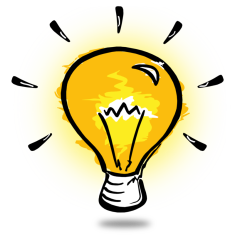 Have you heard of an entrepreneur or visionary who believes in a methodical process. Well there are very few of those, but many visionaries do not believe in process. They rather figure things out and get them done. Process for them is bureaucracy which just delays work without adding much value.
Have you heard of an entrepreneur or visionary who believes in a methodical process. Well there are very few of those, but many visionaries do not believe in process. They rather figure things out and get them done. Process for them is bureaucracy which just delays work without adding much value.
Many of these visionaries start projects without performing required due diligence. Many of them realize mid-way through the project that it is not as attractive as they first thought, as a result wasting a lot of time and resources.
This blog is about a structured innovation process that will help innovators in evaluating ideas at the rapid pace and investing their limited resources in ideas with good market potential. The innovation process described below is a disciplined process that will help innovators discover potential problems well ahead of time and help them fix the problems before making serious investment into the idea.
Iterative innovation process described above evaluates various aspects of the idea at varying levels of detail through each iteration.
Evaluate phase (iteration#1):
This is a very quick evaluation phase which needs to completed in short time. The goal of this phase is to quickly test the opportunity and decide if there is merit to investigate this opportunity further. Use secondary research methodologies to perform high level analysis on customer, strategic, financial and commercial viability of the idea.
Perform customer analysis (using the customer experience framework) to understand the experience delivered by current solutions. Based on current customer experience and customer expectations, a new target customer experience model is developed.Strategic analysis involves analyzing the companies intent and ability to provide the new target customer experience. Some of the questions answered during strategic analysis are: Does innovation enhance companies position in the market? Does the company have the tools/skills required to deliver the target customer experience?Perform financial analysis to understand the market opportunity and revenue potential from pursuing the opportunity. Conduct commercial analysis to understand how the product/service will reach the customer. Does the company have the right ability and structure to deliver innovation to its customer? Or do they have to partner with some others to deliver the right customer experience?
Once the analysis is complete “Go”/”No-Go” decision is made on this innovative idea. If the idea has merit to do further analysis it moves into the “Explore” phase.
Explore phase (iteration #2)
During explore phase the ideas need to evaluated in greater detail by analyzing data/customer inputs from outside the company. Primary research is the focus on this phase, which requires the innovator to gather as much external data and feedback as possible. Customer surveys, one on one customer interviews and job shadows are some of the methodologies used in this phase to understand customer experience factors. Develop competitive analysis along with 3 – 5 year strategic road-map in this phase to see if the idea fits into the strategic road-map. Gather cost information throughout this phase to understand the financial impact of providing different customer experience. Based on the cost and revenue analysis, develop a financial model focusing on net profitability. Draw sales and marketing plans and test them to figure out the commercial viability.
At the end of this phase a detailed plan on how to win the market is developed, and “Go”/”No-Go” decision is made. Based on the size and maturity level of a company, you might want to stop after Explore phase. For example, entrepreneurs might want to stop after this phase and focus on building the innovation. While bigger more mature companies should take it further to “Examine” phase.
Examine phase (iteration #3)
This phase is about making sure all the details related to innovation idea are flushed out. During customer analysis, focus on gathering all the requirements from the customers. Conducted focus groups, solution jams or outcome based surveys to understand the exact customer experience that would help you win over the customers. Get customers to force rank their requirements and do some price sensitivity testing to understand their willingness to pay. For strategic analysis, make sure that the innovation idea has a home once it is developed. Find the right organization and a good leader who would take P&L responsibility for the innovation idea. For financial analysis build a detailed cash flow statement that highlights the break even periods, investment requirements and expected ROI. Conduct some sensitivity analysis on the different assumptions and paint worst case, average case and best case scenarios. For commercial analysis, get your sales team on board and figure out the overall sales targets. You would also need to determine their compensation model and any accelerators for pushing the innovation idea into the market.
The three iteration approach presented here is a well-tested process that would help in testing out the innovation idea. If any idea withstands the test of all the three iterations and still looks good, it is an idea worth investing.


[…] Following a repeatable process that helps in thoroughly evaluating an idea is essential. Here is a blog on innovation process. […]